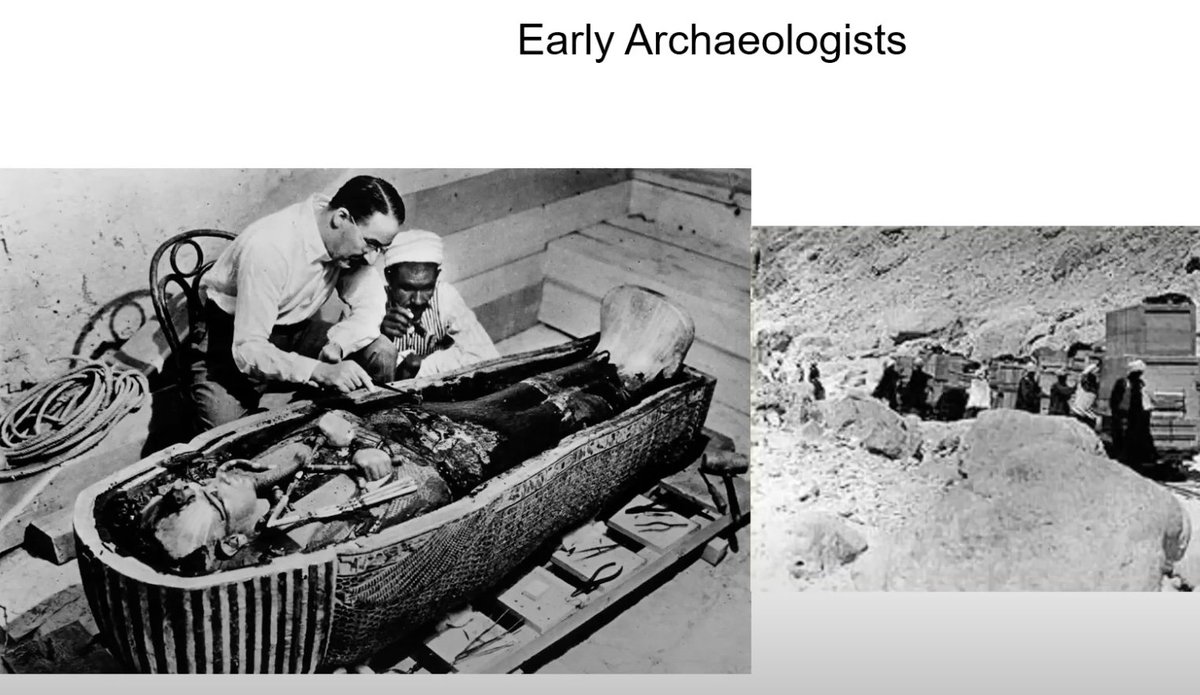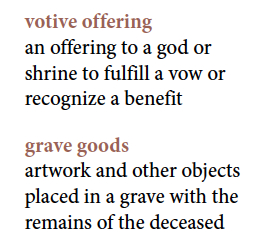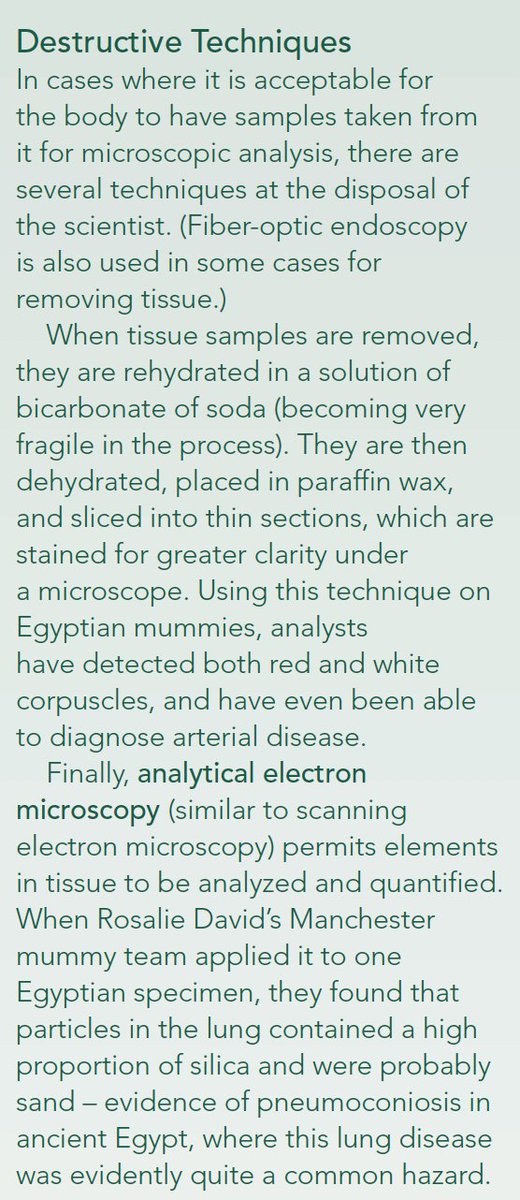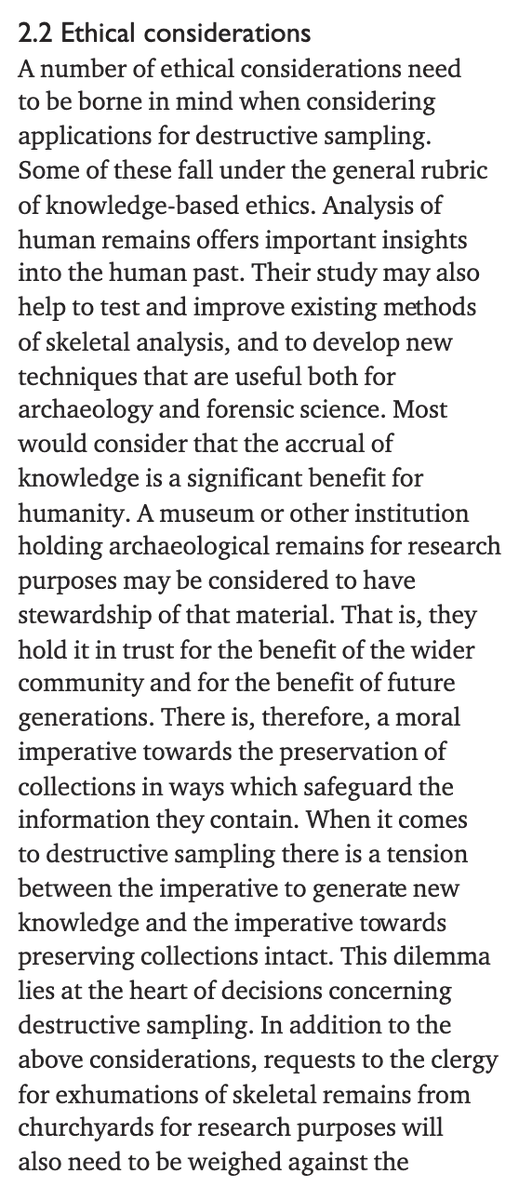#CLST6 #CYO2 #ArchSci Today I listened to an Arch&Anth podcast about the duties of a human remains collections manager. In this episode, bioarcheology and its ethical ramifications are discussed along with the relationship between institutions and ancestral communities. 1/14
Trish Biers from University of Cambridge discussed her responsibilities as a human remains manager and some of the ethical questions regarding her job. At her job, Trish handles the remains of both humans and nonhuman primates, with remains from all areas of the world. 2/14
Some of the daily aspects of her job include regulating the environmental conditions where the remains are stored, as well as examining pathologies and causes for death of the individual. Due to her interactions with the dead, her job brings up ethical considerations. 3/14
Archeology and Anthropology have deep roots in imperialism and colonialism, and many human remains kept in collections are of people affected by these crimes of the past. For example, dug up white bodies were reburied while indigenous bodies were often displayed in museums. 4/14
This issue is dehumanizing and disrespectful, but has yet to be resolved. One factor that complicates repatriation (giving an artifact or human remain back to its original people) is that the laws and legal standards regarding this vary greatly across countries and cultures. 5/14
The United States has the Native American Graves Protection and Repatriation Act (NAGPRA), but European counties such as the UK lack national standards, and decisions regarding repatriation of remains and artifacts are up to the discretion of their host institutions. 6/14
Although there are international codes of ethics regarding the treatment of deceased individuals, there is no formal legislation. This is partially due to differing international cultural attitudes. Because of this, repatriation cases are best handled on an individual basis. 7/14
For example, some remains and artifacts are only meant to be viewed by members from its original community, by religious leaders, or by certain genders. Some things, like votive offerings or grave goods, should not be displayed at all, for it would be disrespectful to do so. 8/14
Biers says that there is no clear solution to these issues, but that conversations with “radical transparency” are the best answer. She says casts and photos are a potential replacement for showing real remains, but this is just a small step in reversing colonialism. 9/14
When excavating human remains, it is important to treat them with the same respect they would have been treated with at the same time of their burial; we know that death was significant due to the funerary and votive offerings left with their burial site. 10/14
Additionally, the studying of remains must be done very carefully. Biers’ lab must make careful decisions about when destructive sampling happens; both preserving remains and discovering new knowledge are equally important to archeology. 11/14
Biers also has to remind herself that when she gets excited about a pathology, it is wrong to feel this way. This is because the individual and their loved ones went through lots of the pain due to this illness or disease, and trivializing it is disrespectful. 12/14
Biers knows she holds a unique position between indigenous communities and institutions. She tries to honor the deceased by bridging historical archeology with contemporary views about death. She knows the individuals she studies are more than just specimens. 13/14
I don’t know if colonialism can ever be truly undone, let alone within archeology, but listening to the respectful and innovative ways to handle repatriation and the display of human remains gives me hopes for a better future in academia, and the world as a whole. 14/14
Sources:
Podcast: https://archandanth.com/episode-60-interview-with-trish-biers/
Tweet">https://archandanth.com/episode-6... 4: Synchronous Funerary Archeology Lecture, 3:00
https://www.youtube.com/watch?v=nNdx2EI_iEk&feature=youtu.be
Tweet">https://www.youtube.com/watch... 8: Stansbury-O’Donnell, A History of Greek Art. (2015). Pg 6.
Tweet 11: Renfrew and Brahn, Archaeology: Theories, Methods, and Practice. (2016). Pg 454.
Podcast: https://archandanth.com/episode-60-interview-with-trish-biers/
Tweet">https://archandanth.com/episode-6... 4: Synchronous Funerary Archeology Lecture, 3:00
https://www.youtube.com/watch?v=nNdx2EI_iEk&feature=youtu.be
Tweet">https://www.youtube.com/watch... 8: Stansbury-O’Donnell, A History of Greek Art. (2015). Pg 6.
Tweet 11: Renfrew and Brahn, Archaeology: Theories, Methods, and Practice. (2016). Pg 454.
Tweet 12: Mays, Simon & Edlers, Joseph & Humphrey, Louise & White, William & Marshall, Peter. (2013). Science and the Dead A guideline for the destructive sampling of archaeological human remains for scientific analysis. Link: https://www.researchgate.net/publication/311811273_Science_and_the_Dead_A_guideline_for_the_destructive_sampling_of_archaeological_human_remains_for_scientific_analysis/citation/download
thanks">https://www.researchgate.net/publicati... for reading! :)
thanks">https://www.researchgate.net/publicati... for reading! :)

 Read on Twitter
Read on Twitter





